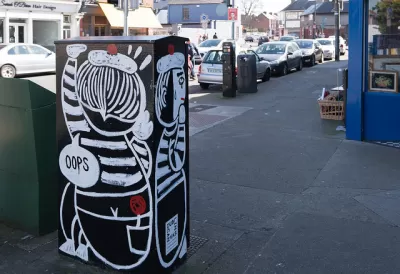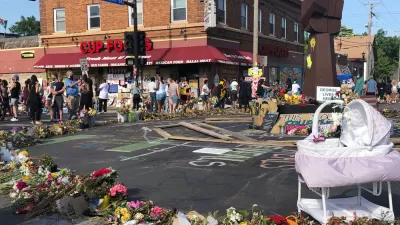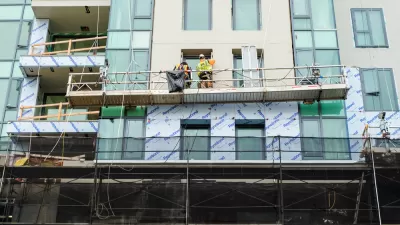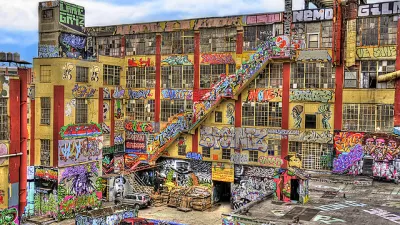There will be important functions in public space that are not always “art” whose value is not in proportion to their prettiness.

Rainey Knudson wants people to stop putting art on utility boxes. “In Houston, the underlying idea for our local box-painting effort is that it ‘converts blight into art by painting the blank canvases around the city,'” she wrote on Glasstire last week. "What’s not to love? Well for starters, when have you ever looked at a blank electrical box on the street and thought, ‘Gee, I wish someone with moderate artistic skills would paint a toucan on that?'"
Knudson’s critiques are a bit deeper than just complaining about the quality of the art work. First, she argues that we should let urban infrastructure blend into the background. ("Consider how, undecorated, these things disappear into the urban landscape. They aren’t 'blight'—certainly not in the way that litter or abandoned buildings are. Electrical boxes are something you probably never noticed, until your local municipality started decorating them.")
But the far more compelling argument is that it’s a way of spending public art money that is extremely limiting for artists. ("I think this bizarre trend has less to do with beautification than it does with cities wanting to take control of street art, to make it sanctioned, palatable, institutional, and toothless.")
Instead, Knudson proposes extremely open-ended public art proposals to be judged entirely on merit. I'd be interested to hear local officials' take on Knudson’s proposal.
However, it was a seemingly small comment Matthew Sekeletron—an artist from Troy, New York—made when he shared the article that has really stuck with me. Utility boxes are a common place to post flyers, and the poster suspected this was in part a sneaky way to combat that.Censhorthip.
FULL STORY: Could Public Art on Utility Boxes Displace Communication?

Planetizen Federal Action Tracker
A weekly monitor of how Trump’s orders and actions are impacting planners and planning in America.

Congressman Proposes Bill to Rename DC Metro “Trump Train”
The Make Autorail Great Again Act would withhold federal funding to the system until the Washington Metropolitan Area Transit Authority (WMATA), rebrands as the Washington Metropolitan Authority for Greater Access (WMAGA).

DARTSpace Platform Streamlines Dallas TOD Application Process
The Dallas transit agency hopes a shorter permitting timeline will boost transit-oriented development around rail stations.

Supreme Court Ruling in Pipeline Case Guts Federal Environmental Law
The decision limits the scope of a federal law that mandates extensive environmental impact reviews of energy, infrastructure, and transportation projects.

Texas State Bills to Defund Dallas Transit Die
DART would have seen a 30% service cut, $230M annual losses had the bills survived.

Bikeshare for the Win: Team Pedals to London Cricket Match, Beats Rivals Stuck in Traffic
While their opponents sat in gridlock, England's national cricket team hopped Lime bikes, riding to a 3-0 victory.
Urban Design for Planners 1: Software Tools
This six-course series explores essential urban design concepts using open source software and equips planners with the tools they need to participate fully in the urban design process.
Planning for Universal Design
Learn the tools for implementing Universal Design in planning regulations.
Roanoke Valley-Alleghany Regional Commission
City of Mt Shasta
City of Camden Redevelopment Agency
City of Astoria
Transportation Research & Education Center (TREC) at Portland State University
US High Speed Rail Association
City of Camden Redevelopment Agency
Municipality of Princeton (NJ)





























